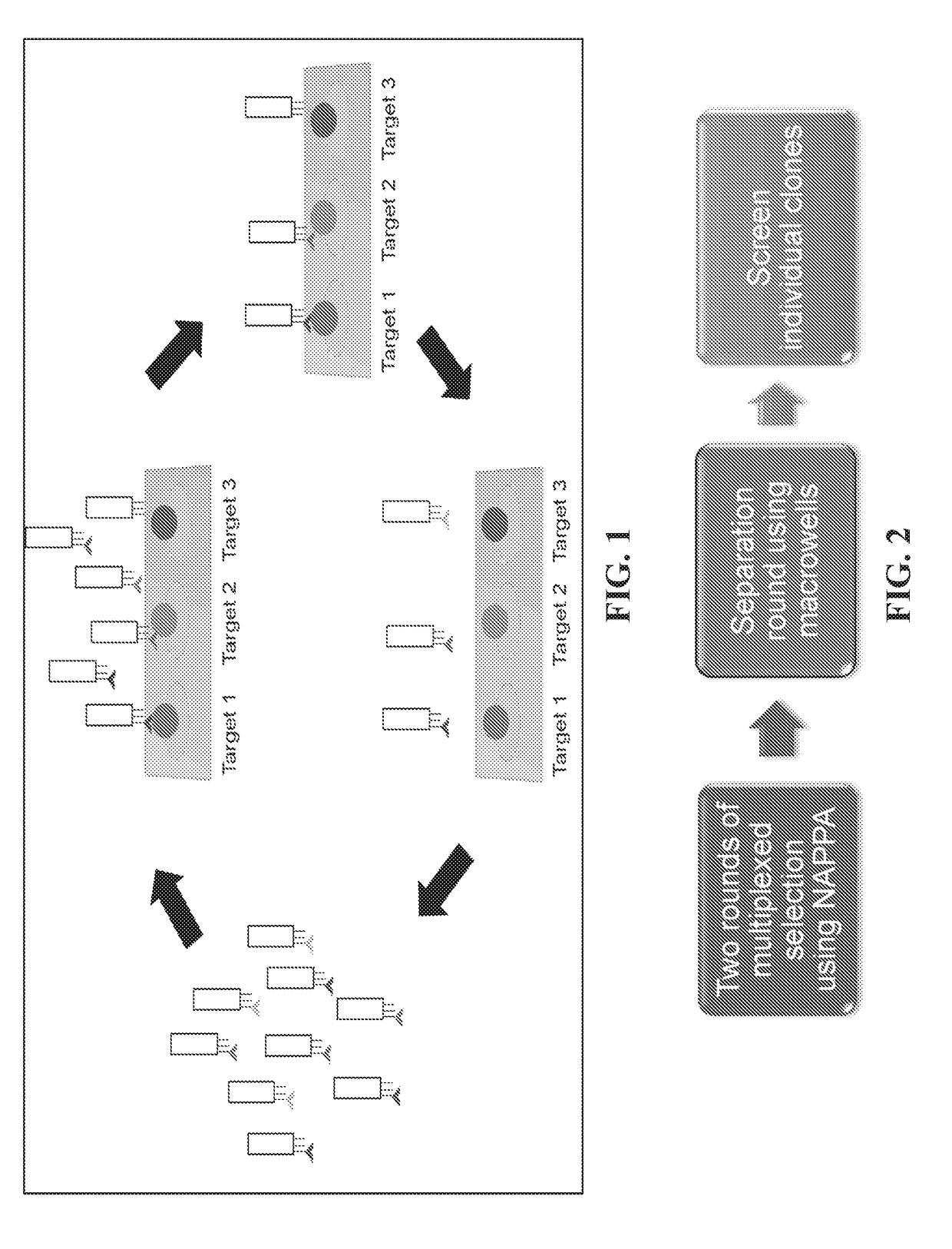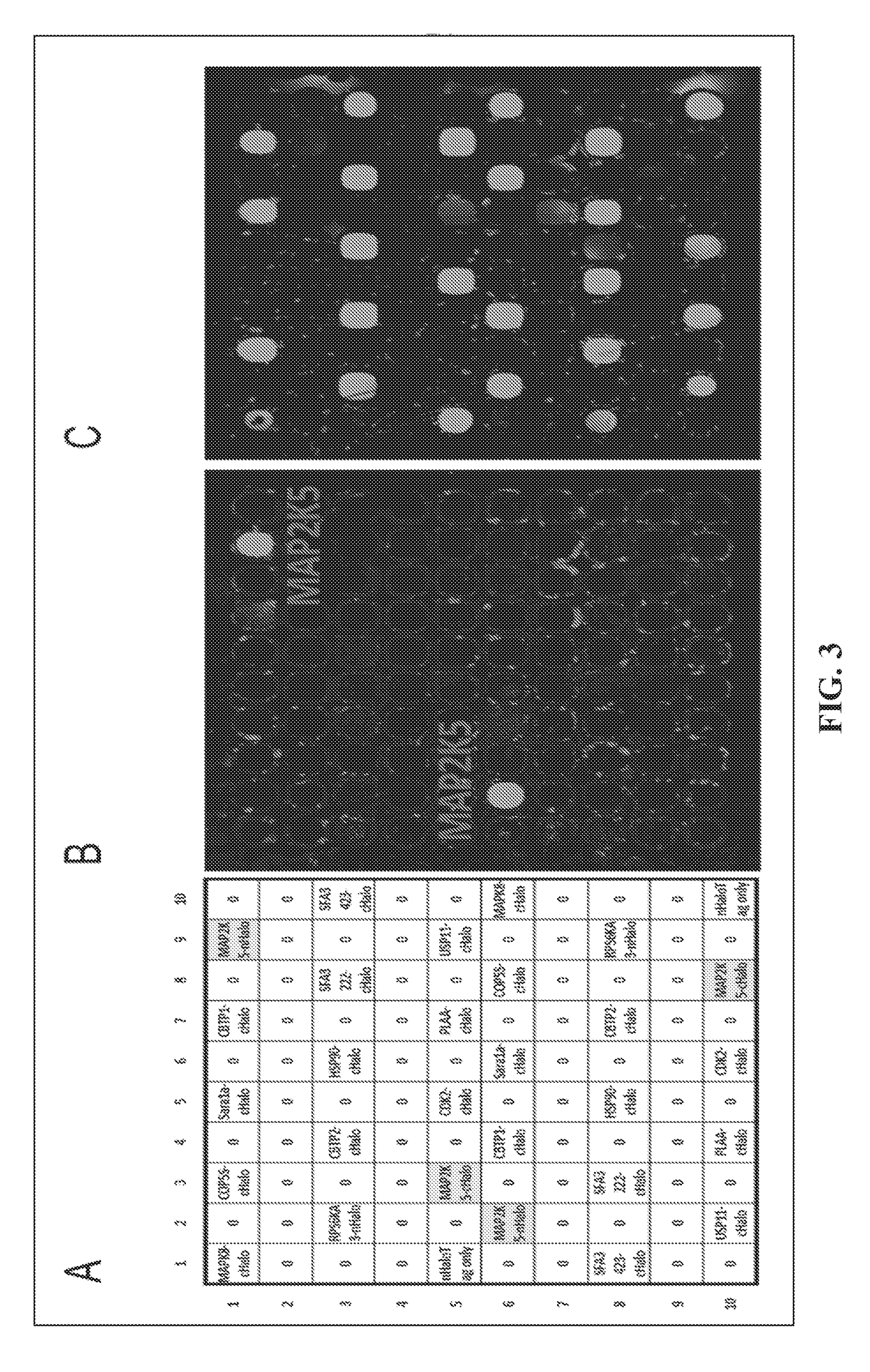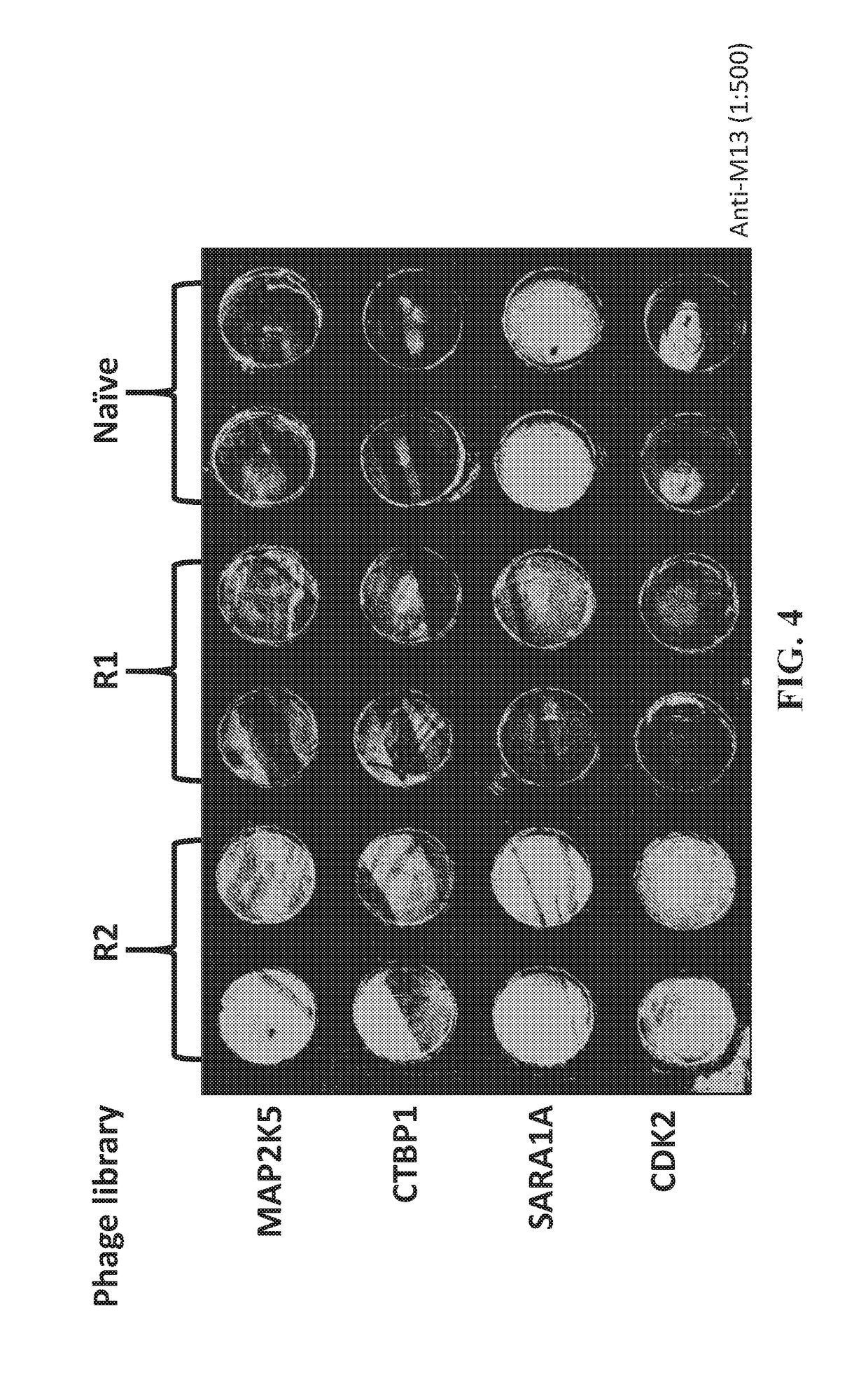Generating recombinant affinity reagents with arrayed targets
a technology of arrayed targets and affinity reagents, applied in the field of highthroughput screening of affinity reagents, can solve the problems of less effectiveness and achieve the effect of cost-effectiveness
- Summary
- Abstract
- Description
- Claims
- Application Information
AI Technical Summary
Benefits of technology
Problems solved by technology
Method used
Image
Examples
examples
One Construction and Array Production
[0023]All genes of interest were cloned in pJFT7_nHALO or pJFT7_cHALO, the NAPPA compatible expression vectors. These expression vectors allow the in vitro expression of proteins of interest with a terminal HaloTag. Protein arrays were constructed through a contra capture concept as described (1).
Enrichment
[0024]Array displaying MAP2K5, CTBP1, SARA1A and CDK2 were constructed and expressed. Initial non-enrichment phage library was incubated and washed to allow binding. Mild acid (0.2M Glycine pH2.0) wash was used to remove the bond phage particles and immediately neutralized using 1M Tris-Cl (pH9.1). E. coli were then infected with the collected phage for titring and amplification as previously described (2).
Probe Libraries on Arrays
[0025]To evaluate the enrichment efficiency, same input of non-enriched library, R1 and R2 were probed on the protein microarray containing MAP2K5, CTBP1, SARA1A, CDK2 and RPS6KA3 for 1 hr at RT, followed by the M13 a...
PUM
| Property | Measurement | Unit |
|---|---|---|
| Affinity | aaaaa | aaaaa |
Abstract
Description
Claims
Application Information
 Login to View More
Login to View More - R&D
- Intellectual Property
- Life Sciences
- Materials
- Tech Scout
- Unparalleled Data Quality
- Higher Quality Content
- 60% Fewer Hallucinations
Browse by: Latest US Patents, China's latest patents, Technical Efficacy Thesaurus, Application Domain, Technology Topic, Popular Technical Reports.
© 2025 PatSnap. All rights reserved.Legal|Privacy policy|Modern Slavery Act Transparency Statement|Sitemap|About US| Contact US: help@patsnap.com



